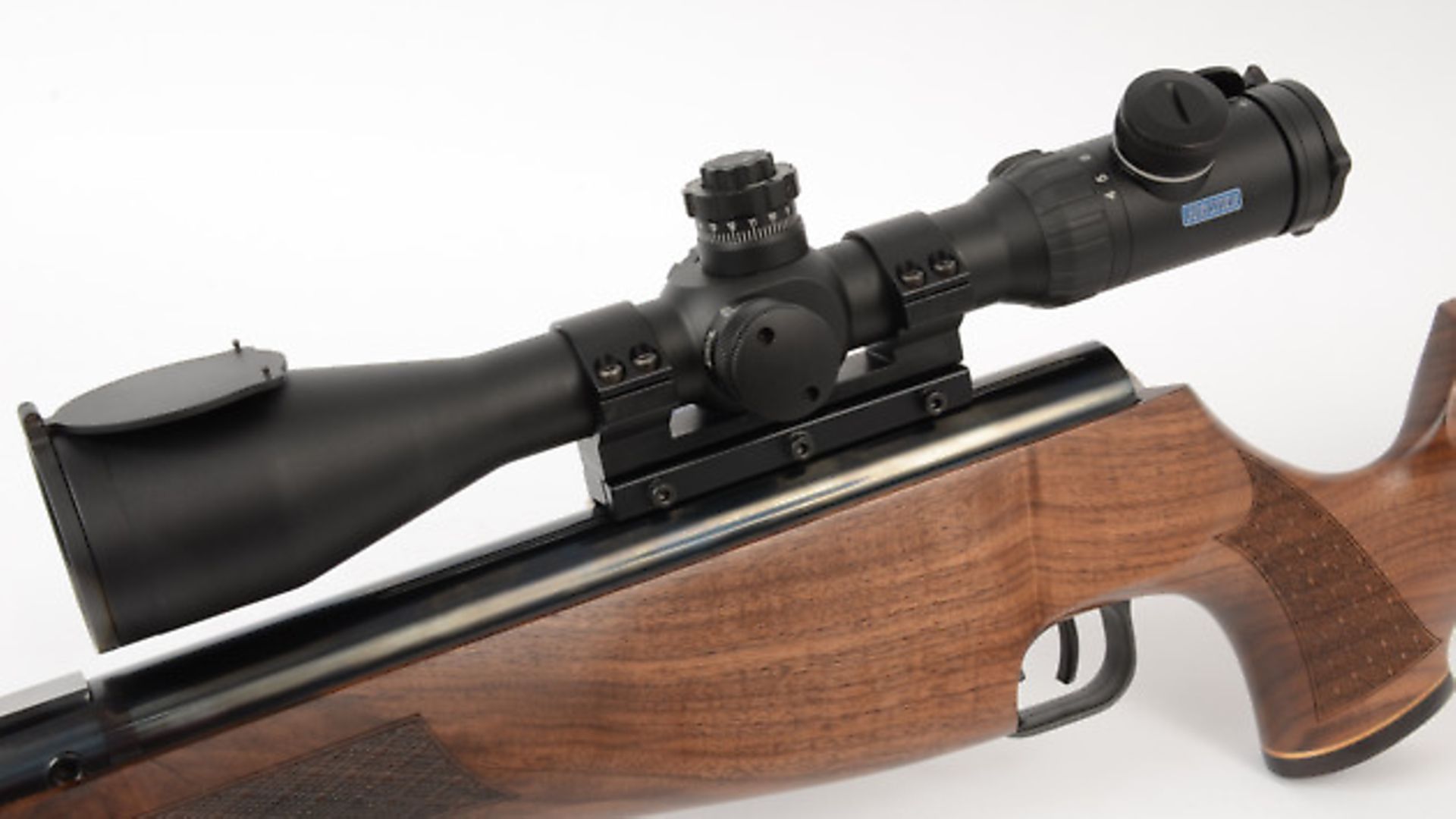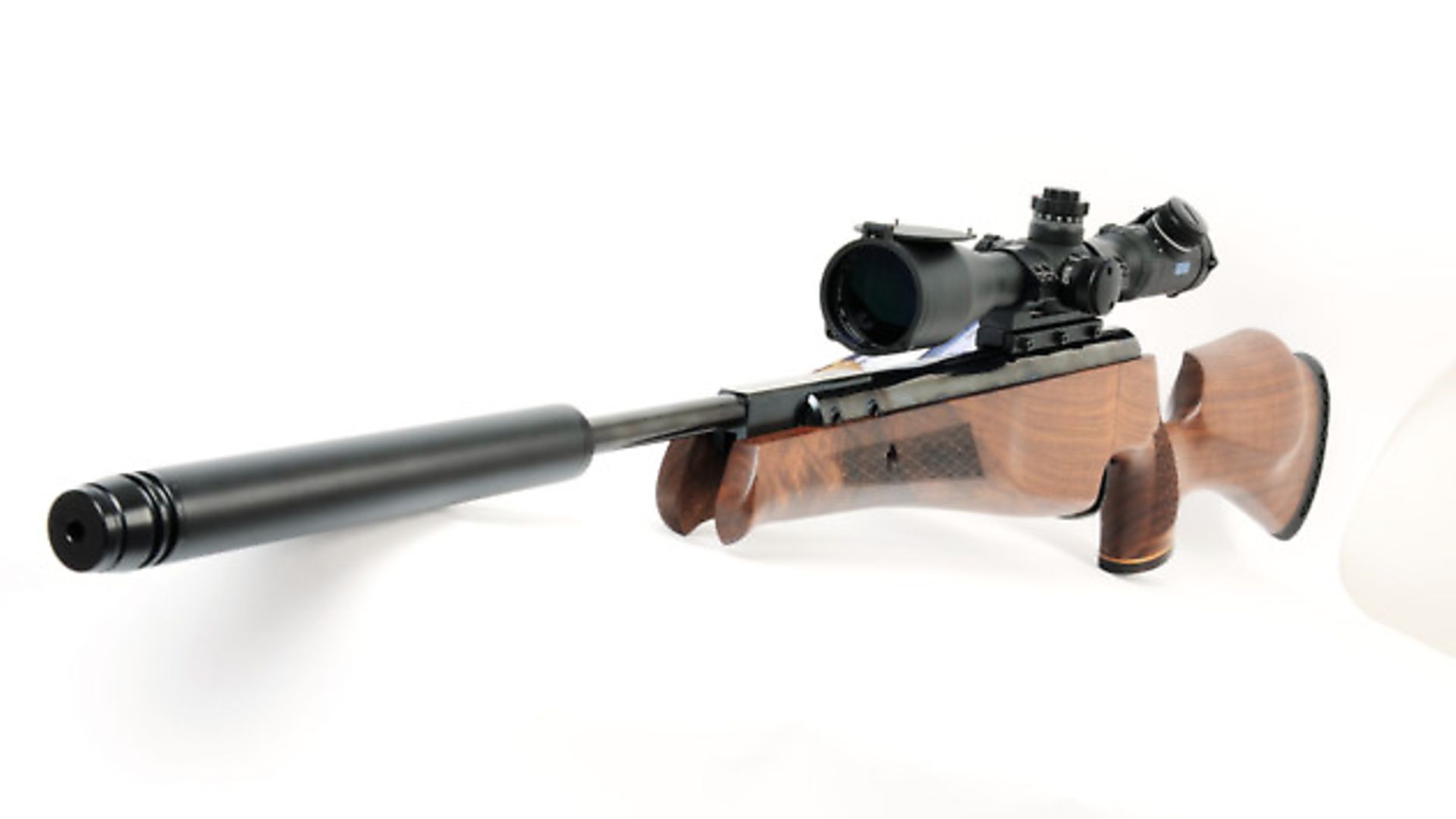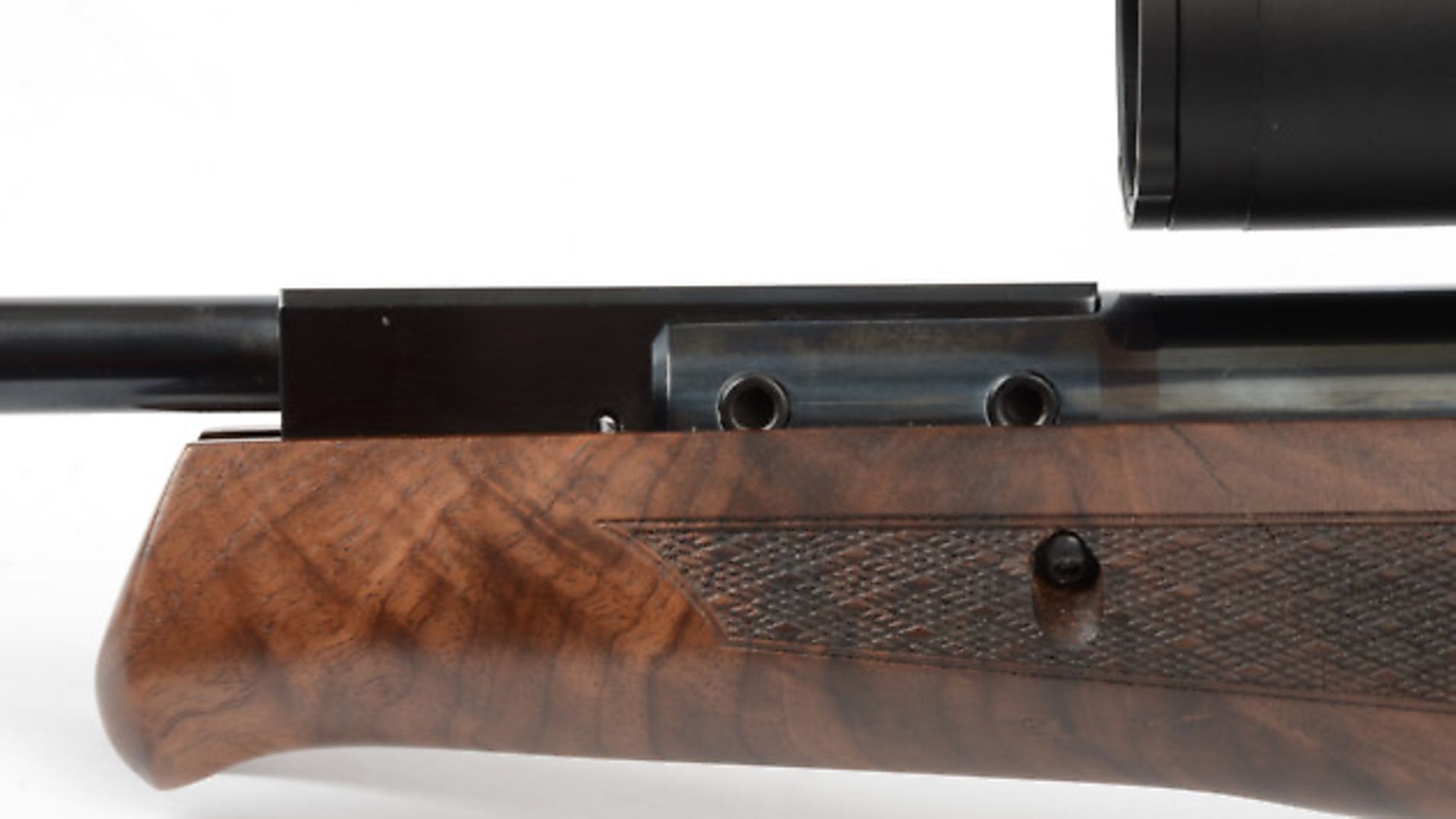The editor takes the finest English break barrel made to the range
 credit: Archant
credit: Archant
It seems to me these days that you can’t get into any gun shop without tripping over a gas-ram airgun. Every major manufacturer has one or more in its range, making bold claims about the increase in performance the buyer can expect to see. They claim less noise, reduced vibration and a host of other improvements that the ram will make over the plain old spring-piston gun. This begs the question as to why so many arrived in the shops all at once and the answer is simple. The patent for the design ran out and the manufacturers were in the starting blocks waiting for the pistol to fire the moment the patent lost its power. The guns were developed, manufactured and ready to ship.
The idea for the gas-ram came from two English gun makers who were searching for ways to improve the airguns of the day. Studying the way the suspension fork of a high-performance motorbike worked gave them an idea. Pressurised gas inside the system replaced the coiled steel spring and the same could be done with the airgun, so they made up some prototypes and over time developed the system. The benefits were that the system could have a quicker firing cycle because the weight of the spring was removed. This also eliminated many of the unwanted vibrations inherent in a coiled spring system. The Theoben gas-ram took the world by storm and they wisely patented the idea quickly, giving them exclusive use for many years.
Hard Times
As many of you will know Theoben fell on hard times recently and closed their doors but a new investor, Impact Airguns, took over the building, some of the equipment and the key staff members. They’ve based their rifles on the heart of the old models, reworking and refining them to achieve new levels of performance and the RM100 on test is a prime example of this process.
At a glance, the exterior metalwork is similar to the old Evolution but there’s a huge list of improvements and upgrades inside. Externally you’ll notice that the barrel is longer, as is the breech block. This is in line with the high-power export models adding strength and stability. Up front the Long Series silencer is now all aluminium, reducing weight, which in turn offsets the extra barrel length, keeping the balance the same.
The most obvious change to the eye is the stock. These are made in England from high-grade walnut and have been seriously redesigned. The fit and feel is superb and the chequering is first class, just as you’d expect from a hand-made English gun. Inside is where the real magic happens with a new level of hand finishing being applied to critical areas, most noticeably the trigger assembly. Even though the components are machined to tight tolerances, they can benefit from the skilled hand of a master gunsmith. Each part is precisely matched to the next and then assembled before being fully tested. After the rifle is completed it’s test fired in the factory for power, consistency and most importantly of all, accuracy. That’s right: each and every rifle is accuracy tested to ensure that it’s perfect.
 credit: Archant
credit: Archant
Time is Money
All this detailed work is time consuming and time equals money, which is why cheaper guns cannot have this level of attention given to them. This goes a long way to explaining why these guns cost nearly £600. Your Saville Row suit or your Aston Martin will be expensive for the same reasons. Sure, you could buy a Tesco suit or a Daewoo if you want something cheap, but that’s not what we’re looking at here. This rifle could well be the finest English-made, break-barrel you can buy and if you want one you’re going to pay that much more than for a mass-produced gun.
If you’re not sure that you want to pay that much, don’t go and handle one. If you do you’re going to want one because the polishing and bluing are stunning. The oiled walnut has skilfully applied skip-line chequering and nice touches like a contrasting pistol grip cap with a pale spacer that offsets it beautifully. The shape and contouring fitted me like glove. I was particularly glad to see that it’s not ambidextrous. The pistol grip has a thumb-up groove and a proper palm swell that felt like it had been made for me.
As you shoulder it you immediately feel that it’s a large gun, with fully man-sized proportions that could be a bit of a handful for smaller shooters. The reach to the trigger blade was spot on, but I did notice one slightly unusual thing. The first stage spring on the trigger was much stronger than I’ve experienced before but I loved the smooth, gliding action. The second stage is announced clearly with no doubt about where you are. It breaks with a delicate precision that I adored. Just in front of the trigger blade is the automatic safety. As you reach for the trigger you immediately know if it’s on and if it is your trigger finger can silently nudge it forward making the rifle ready to fire.
Old softie
 credit: Archant
credit: Archant
Regular readers will know that I’ve become soft and lazy on a steady diet of pre-charged (PCP) guns that have no recoil and therefore tolerate sloppy shooting technique, but the RM100 is no PCP. Gas-rams exhibit a sharp, quick firing cycle that needs proper respect, just like any other recoiling gun, so to shoot some good groups I knew I’d have my work cut out. To ensure that I was getting the very best accuracy I shot from a good sound bench carefully covered with a soft shooting bag that ensured that the rifle’s recoil would be allowed to move naturally with every shot. I held with the very lightest pressure I could and just focused on trigger release and follow-through. The rifle needed to be left alone to do its own thing. Any change in grip or pressure will affect a recoiling gun and must be avoided to get the very best accuracy that the gun can offer.
An area where we can affect this recoil sensitivity is in the scope we choose to fit and I selected a favourite of mine, the Hawke Airmax 4-16 x 50 for two reasons. Firstly, it’s a big heavy scope. This adds mass to the rifle which helps subdue the recoil. I used one of Impact’s own ‘Dampa mounts’ which has a joint between the rail and the ring base that has a tiny amount of movement that’s highly controlled. This reduces the stress on the scope as the rifle snaps backward and forward as the rifle recoils and then surges forward at the end of the cycle. Is also gets a good solid grip on the scope rail eliminating the chance of scope creep.
Wind and Rain
The range was ‘blessed’ with gusting winds that swirled the dead autumn leaves round and round so I accepted that I’d not be able to extract the very best accuracy the rifle was capable of but consistent ½” groups at 30 yards showed the potential. I offered the rifle to some of my clubmates who shoot springers regularly, all of whom commented on just how beautifully made the rifle was and just how quick and smooth it was to shoot. Talking to the senior engineer at the factory I learned that they have a new development of the recoil reduction system that’s being fitted to all RM100s in future. This, he reliably informs me, is a big step forward in the rifle’s development that makes it far less hold-sensitive, and therefore easier to shoot. You’ll be unsurprised to learn that I put in my request for a test gun right there and then.
Back at home I chronographed it with my usual test pellet, the Air Arms Field which in .22 weighs 15.9 grains. Average velocity was 560 fps for muzzle energy of just over 11 ft.lbs. which is ideal. Shot-to-shot velocity spread stayed under 10 fps through a 30 shot string which is what I’d expect form a rifle of this quality. While running this test I became all the more impressed by the mechanical action of the rifle. Everything moves with a smooth, solid feel like beautifully machined parts running with the very best lubricants, because that’s exactly what it is.
This is a kind of phoenix story in that we were all so sad when Theoben went under, worrying that a great British brand had been lost, but the guys at Impact have picked up the baton and are running strongly into the company’s airgun future. They have a great choice of rifles all made to the same very high standards as the test gun. They also have some very exciting rifles in long term development that I’m sworn to keep secret until they decide if they’ll make full production. So to the question ‘is this the best British made, break barrel rifle money can buy?’ My answer is yes, and better still the first batch will be in the shops as you read this, so get down to your local dealer for a look. I assure you that you’ll like it every bit as much as I did.